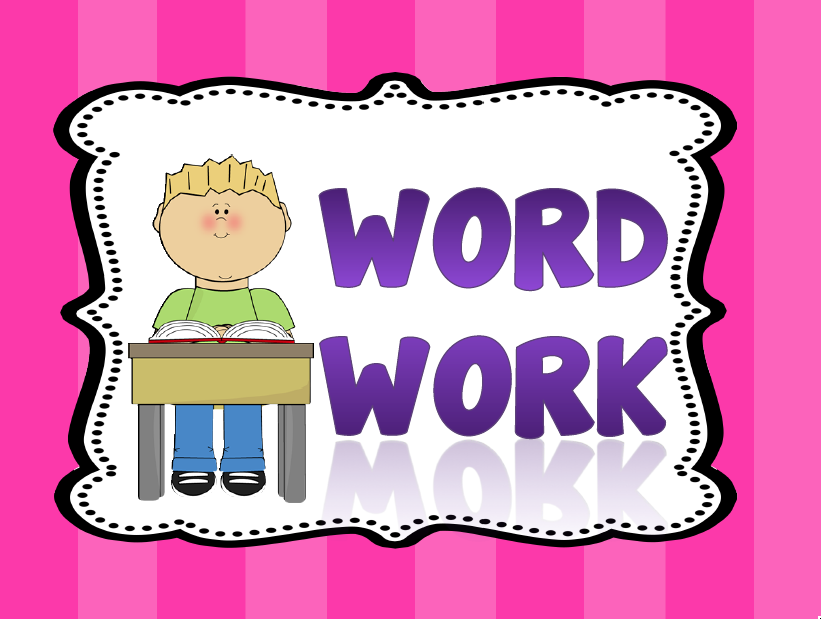

SCIENCE OF READING UPDATE: When teaching a child to read, you must teach them to sound out words and use decodable texts. PLEASE do NOT teach your child to read by using predictable books. Predictable books are the leveled books and go something like this: I like to dance. I like to climb. I like to hike. . . Children aren’t “reading” but guessing based on the pictures. Don’t encourage guessing! Words like dance, climb, and hike have advanced spelling patterns that young children haven’t been taught yet. Stick to decodable texts so your child can be introduced to phonics systematically and SOUND out words. DECODING the LETTERS is READING!
A faulty method of teaching reading is comprehension first, which involves having the child use context clues to read. However, the science of reading has taught us that children need phonics first—to look at the letters in words! When children are stuck, they need to sound it out!
What is the goal for the Daily 5?
Before you get into Daily 5, check out this great way to launch independent reading: Independent Reading
The Daily 5 allows students to work independently on meaningful reading and writing while the classroom teacher meets with individuals and small groups. Students cycle through 5 tasks: read to self, read to someone, work on writing, word work, and listen to reading. Upper grades (5th grade and middle school) often do just read to self, read to someone, and work on writing. Children learn to read by reading, not through a series of worksheets. This extended reading and writing time allows students to make significant progress in literacy as they take responsibility for monitoring their learning. In addition, the Daily 5 model gives teachers ample time for small group work and time to coach struggling readers while the students establish independence and stamina.
Daily 5 Goal Setting
Read The Daily 5, Fostering Literacy Independence in the Elementary Grades, by Gail Boushey and Joan Moser. The key is to have the children take ownership of their learning and behavior and ultimately reach the goals you set together. Your literacy coach and reading specialist can help you with reading strategies and book selection. Your school and public librarian can also help with book selection, especially coordinating several copies of books on tape.
How much time do you need to teach each Daily 5 step?
You must start slowly and be very detailed about behavior and expectations. The teacher’s goal is not to intervene by even praising correct behavior. Instead, the teacher must explicitly teach the behaviors and have students practice them until they become habits. Spend at least 5 days mastering and focusing on each Daily 5 section, starting with a mere 3 minutes of uninterrupted practice. It will take about a total of 25 days to implement this model fully, define and practice behaviors, build stamina, and assess individual needs.
How do you communicate each individual’s reading progress with Daily 5?
Purchase a thick binder and have a section for each student. In the binder, have reading conference notes on each child, running records, informal assessments, and “Keeping Track” charts of the Daily 5 rotations. A monthly calendar should include the names of those students you plan on conferencing with, with sufficient time for the child to get a lot of independent reading to reach their goals. You will meet with the struggling readers more often in small groups or 1:1. A “Strategy Groups and Instruction” chart should be included to know who is receiving what strategy group instruction. I highly recommend reading The Cafe Book by the same authors and following their outline of record keeping.
See Reading Cafe.
How will you know when you have accomplished teaching the Daily 5 routine?
You will know when the class functions independently when you have accomplished each step. The children are there to support each other, as they will have been given ample time to learn and practice the correct way of each rotation, and they have seen the incorrect way modeled. Each student should demonstrate proper behavior and articulate their goals and strategies. The goal is to have the five 30-40 minute rotations, and children choose their rotations. Between each rotation, the teacher gathers the class on the rug to do focus lessons that the children should try to implement at their stations.
Why incorporate the Daily 5?
Instead of running off and correcting hundreds of disjointed and meaningless worksheets each day while you work with individuals or small groups, students spend their time READING to themselves, READING with others, and listening to fluent and expressive READING! They are WRITING and working with WORDS related to their reading, not random words. The Daily 5 also lends itself easily to differentiation of instruction.
How to Prepare for the Daily 5
Before you begin the Daily 5, be sure you have the following:
- A meeting area on the floor to meet with the whole class.
- A meeting area to meet with small groups or individuals.
- A well-stocked classroom library.
- Book boxes for each student.
- Listening center area, stocked with books.
- Writing material center.
- Anchor charts are displayed. (The following lists are your “anchor charts.” Brainstorm these together, and refer to them often.)
 VectorStock Image
VectorStock Image
Teach students that there are 3 ways to read a book
- Read the pictures.
- Read the words.
- Retell a previously read book.
Use I PICK to find a good fit book
I choose a book.
Purpose ~ Why do I want to read it?
Interest ~ Does it interest me?
Comprehend ~ Do I understand what I am reading?
Know ~ I know most of the words.
 VectorStock Image
VectorStock Image
Follow the suggested lesson in Daily 5 of bringing in a variety of shoes to demonstrate I PICK. Try each shoe on in front of the class. Which is the best fit for the purpose? Some shoes fit fine but are not for the proper purpose. For example, you would not wear winter boots in the summer, just as you would not read Goldilocks and the Three Bears to find information on bears! Some shoes are too small (too easy books) or too large (too tricky). Children take off one shoe and try on each other’s shoes. The most comfortable shoe you will find is your own ~ the one unique to you. Shoes have different sizes and purposes; the right book for each individual varies widely, too!
 VectorStock Image
VectorStock Image
To teach each part of the Daily 5, we use MUSCLE MEMORY twice daily
- Identify what is to be taught.
- Set a purpose and a sense of urgency.
- Brainstorm behaviors desired using an I chart. (Students’ behavior is on one side/Teacher’s behavior on the other ~ the teacher side will always say “working with small groups or individuals”)
- Model most desirable behaviors. (1-3 students)
- Incorrect model: Model least desirable behaviors, then model most desirable behaviors. (Pick the 1-2 students you sense will have difficulty cooperating to model these.)
- Everyone practices and builds stamina. (Start with 3 minutes, less if necessary. Never let incorrect behavior continue to be practiced.)
- The teacher stays out of the way, sitting at a guided reading/assessment spot.
- Check-in signal (bell/chime) ~ come back to the group.
- Group check-in: How did you do? How did it go? Review the anchor chart. What did we learn?
- Repeat 1-9
 VectorStock Image
VectorStock Image
Read To Self
What does this look like?
- Read the whole time.
- Stay in one spot.
- Read quietly.
- Work on stamina.
- Check for understanding.
- Get started right away.
- Put materials away correctly.
 VectorStock Image
VectorStock Image
Read To Someone
What does this look like?
- Sit EEKK. (elbow, elbow, knee, knee)
- Stay in one spot.
- Read the whole time.
- Check for understanding.
- Get started right away.
- Put materials away correctly.
Teach that there are 3 ways to Read to Someone. Spend time modeling/practicing each one:
- Check for Understanding. When students Read to Someone, one partner holds a laminated check mark. If the student holds the check mark, they are the listener, word helper, or coach. Once the partner has finished reading the passage or page, the partner holding the check mark asks the reader questions about what they read. Then they switch; the other student reads as their partner holds the check mark, and this time, the partner “checks for understanding.” As the year goes on, students ask “thick” questions rather than literal ones.
- I Read/You Read. This is a great way to work on fluency. The more competent reader reads a page, and the 2nd reader immediately rereads it.
- Read 2 Different Books. The 1st reader reads a page of their book. Then, the silent person tells what they have just heard. Next, the 2nd person reads his page, and the silent person tells what he has heard, etc.
How To Choose a Partner ~ What does this look like?
- Raise hand, mouths closed.
- Make eye contact with another student with a hand raised.
- Walk over to that person.
How To Be a Coach:
- Silently count to 3.
- Ask: Do you want time or coaching?
- If the partner says time, wait patiently; if they say coaching, say:
- Get your mouth around the 1st sound. Sound it out.
- Try skipping the word and go back.
- Do you see any chunks that you know?
- Did your try look right? Sound right? Make sense?
 VectorStock Image
VectorStock Image
Work on Writing
What does this look like?
- Write the whole time.
- Stay in one spot.
- Write quietly.
- Get started right away.
- Reread your story.
- Put materials away correctly.
FOCUS LESSONS: Where to sit in the room, topics of what to write about, different forms of writing, how to write words when you are stuck, then teach various writing mini lessons. Do “Muscle Memory.” Practice for 5 days. (Start day 10-15. Continue with Read to Self and Read to Someone). Increase time slowly each day. The sense of urgency is to become a better reader and writer. We care about our writing and the people who read it. We have a choice in what to write, and it is fun.

Word Work
What does it look like?
- Take materials of choice.
- Set up in a quiet location.
- Work the whole time.
- Stay in one spot.
- Work quietly.
- Get started right away.
- Try your best.
- Put materials away correctly.
FOCUS LESSON: Procedures for material setup, the proper use of materials, and clean up. Do “Muscle Memory.” Practice for 5 days. (Start days 15-20. Continue with Read to Self, Read to Someone, and Work on Writing). Increase time slowly each day. The sense of urgency is to become a better reader, writer, and speller. We care about our writing and the people who read it. It is fun.
 VectorStock Image
VectorStock Image
Listening To Reading
What does this look like?
- Follow along.
- Listen to the whole story.
- Listen quietly.
- Check for understanding.
- Get started right away.
- Rewind tape.
- Put materials away correctly.
FOCUS LESSON STARTERS: How to set up. How to listen and follow along using words and pictures. Do “Muscle Memory.” Practice for 5 days. (Start days 20-25. Continue with Read to Self, Read to Someone, Work on Writing, and Word Work). After that, slowly increase the time each day. The sense of urgency is to become a better reader, have fun, and understand new stories!
![]()

